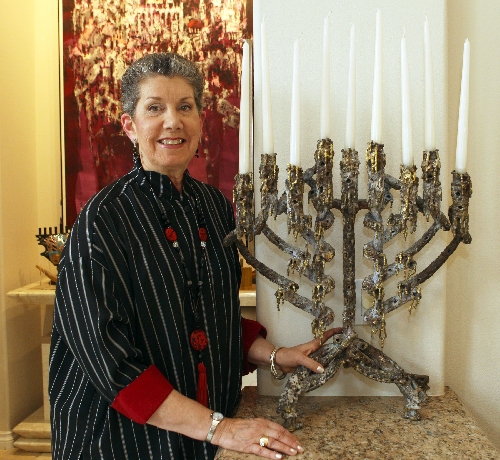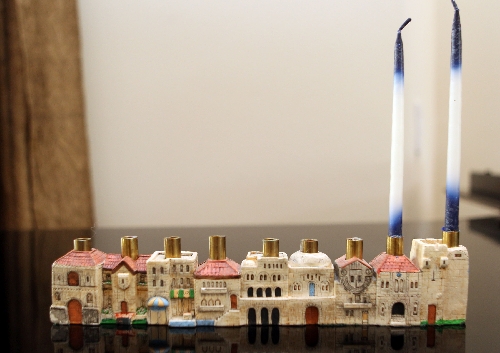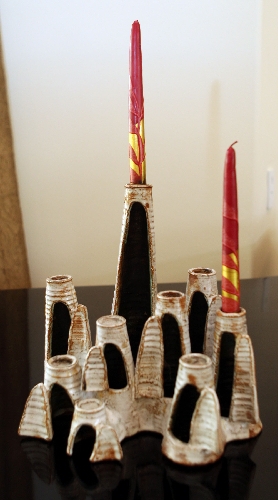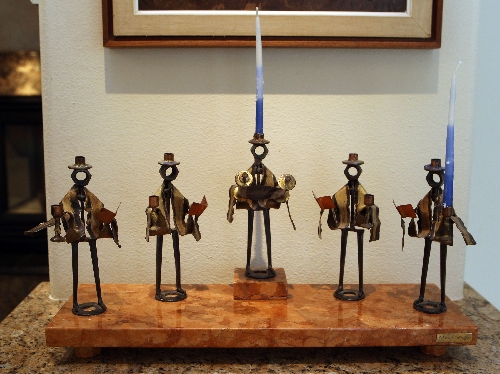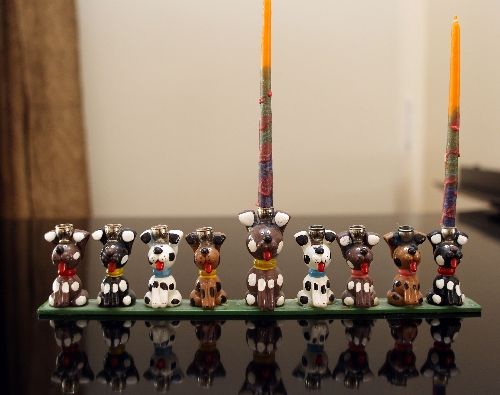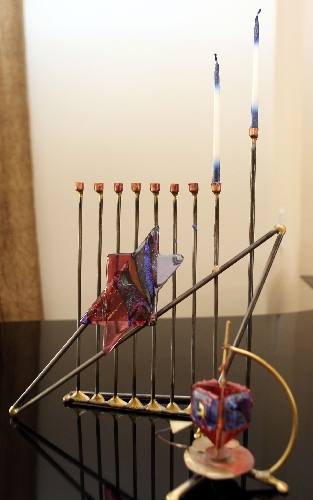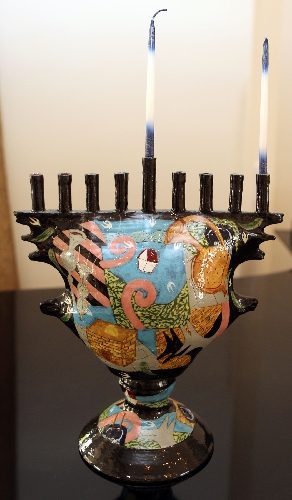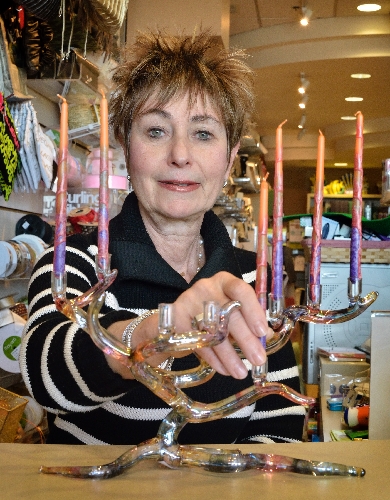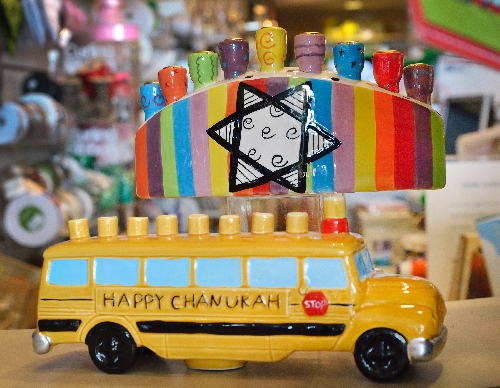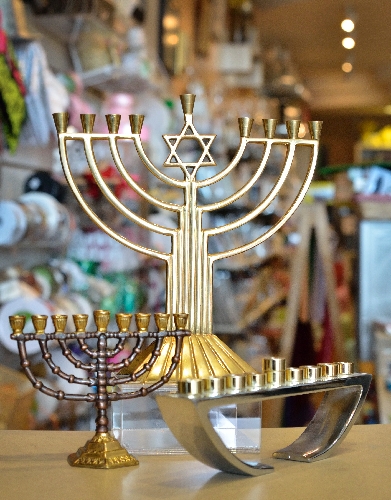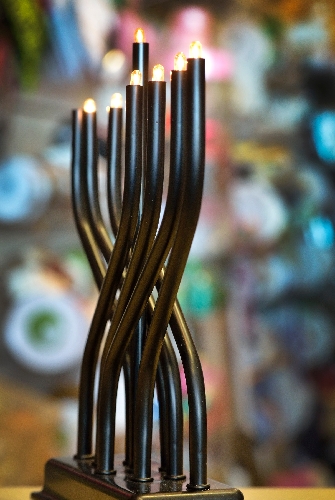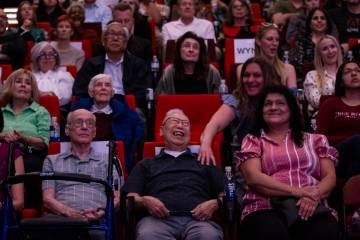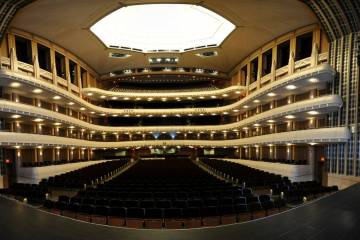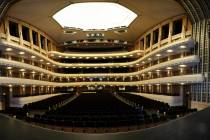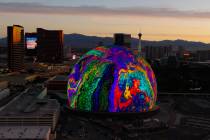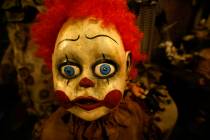Hanukkah menorahs vary from traditional to quite modern
While it's doubtful that anybody has felt compelled to argue the point, the Hanukkah menorah may be the most artistically versatile religious object around.
You can find Hanukkah menorahs made out of stone and ceramic and brass and pewter, of hand-blown glass and crystal, and, even, of kids' modeling clay and Legos.
Then, a Hanukkah menorah's style and design can evoke anything from stolid tradition to classic understatement to contemporary cool to charming whimsy.
But whatever their construction, style or provenance, Hanukkah menorahs share a common purpose: Providing light and fostering recollection during the eight-day feast of Hanukkah, which this year begins at sundown Saturday and runs through Dec. 16.
Hanukkah, also sometimes referred to as the "festival of lights," recalls the rededication of the temple in Jerusalem about 165 B.C., when one day's supply of oil to light the temple's menorah miraculously lasted eight days.
On each night of Hanukkah, candles in the Hanukkah menorah are lighted in commemoration of the event.
Technically, a menorah is simply a candleholder, notes Rabbi Malcolm Cohen of Temple Sinai in Las Vegas. The Hanukkah menorah is distinguished by its eight candleholders or lights, plus one more for the shamash, the candle used to light the others.
But the latitude that exists beyond those basics can promote the Hanukkah menorah into the more rarified realm of collectible art.
Consider, for example, a menorah's lighting mechanism alone. Most use candles to provide light, notes Rabbi Yocheved Mintz of Congregation P'nai Tikvah, while "some are oil and wick."
Still others simulate the light of burning candles through LED lights, or even - in menorahs presumably directed at a younger clientele - glow sticks.
Given the range of styles and materials used to make them, Hanukkah menorahs "are art objects," says Ilana Shapiro, co-owner of Judaica on Wheels (www.judaicaonwheels.com), a Las Vegas-based online Judaica store.
Shapiro and business partner Roz Goldman both collect them, Shapiro adds, and "a lot of people collect them and have them year-around."
Shapiro says she and Goldman started their company because "we love collecting Judaica and we had a hard time finding items that were for our generation. So, we went on a quest to find more modern-type things."
Among those items were Hanukkah menorahs.
"We started off a long time ago with menorahs that were just brass - not very exciting; it just did its job and that was that," Shapiro says.
Now, artists are creating menorahs out of carved wood and hand-blown glass, she notes. "And we've got one for kids. It's made out of Legos and has a little hole in it for the candle."
Collectors interested in artistic contemporary representations of Hanukkah menorahs "have to kind of search for them," Shapiro says. "But I'm tending to find a lot of contemporary designs out there.
"My mother's generation, things were very simple. They just had something and it served a function and that was that. But, now, it's become more like a decorative object."
Alligator Soup, a gift, card and stationery boutique at 9350 W. Sahara Ave., has stocked menorahs ever since the business opened 30 years ago, says co-owner Helen Edell.
"Sometimes parents come in and buy a menorah for their kids who are off in college," she says. "Menorahs are great all year around to give as bar mitzvah gifts, bat mitzvah gifts and wedding gifts."
In some families, parents give children their own menorahs to light during Hanukkah and, then, to perhaps someday pass down to their own children, Edell says.
"I love menorahs, especially glass menorahs," she adds. "But there are all kinds of menorahs."
Shapiro says the least expensive menorah her company offers is a peace sign menorah for $14, "and my parents just bought one for $600 from (its) artist. It's made out of fancy glass."
And those glow stick menorahs? "We sell those," Shapiro says. "A lot of people buy those for cruises. Crack it, and there's no fire hazard."
Mintz says her collection currently includes about 17 Hanukkah menorahs. Is that the result of a conscious effort to collect them?
"Well," she answers with a laugh, "you live long enough ..."
Like any other piece of art, a Hanukkah menorah might even be the repository of a memory.
"I have one that's particularly moving, which was made by a Holocaust survivor," Mintz says. "And, to me, it looks like tears."
Another, a museum piece, created by an artist, bears a number of symbols, most of which Mintz could understand. The exception was the figure of a dog.
"I happened to ask the artist, 'What's the symbolism of the dog?' " Mintz recalls. "He said, 'No symbolism. It's just my dog.' "
What is the appeal of collecting Hanukkah menorahs?
"I think it's because we don't do Christmas and can't collect (Christmas tree) ornaments," Shapiro says. "So, Jewish people tend to collect dreidels or menorahs."
Edell also has noticed that "we also have a small group of non-Jewish people who come in and buy menorahs just because they love them for whatever reason."
Maybe, Mintz offers, that's because "the concept of bringing light into the world at the darkest time of the year, that goes across the board."
Contact reporter John Przybys at jprzybys@ reviewjournal.com or 702-383-0280.



